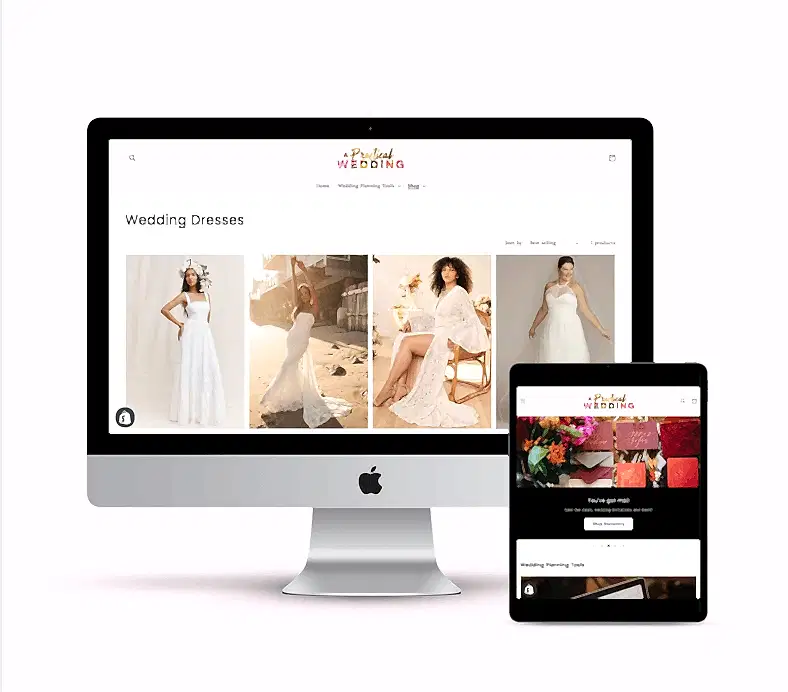

In 2009, I decided to become an adult.
That doesn’t mean I threw out my Xbox or my wardrobe. (In fact, I will NEVER throw out my beat-up checkered Vans that have twenty-three holes. As a wise woman named Demi Lovato once said, “Sorry, not sorry.”) Becoming an adult simply meant that I started paying attention to my finances, and I started budgeting each paycheck.
I did that by creating a spreadsheet where I’d subtract my monthly bills from each paycheck, and the amount left was categorized as “monthly spending.” Pretty vague, and pretty simple, but at least I had an idea of how much money I had coming in and going out.
Cut to 2017: I’m no longer single, and we have more than three credit cards. We also have my wife’s student loan, two car payments, several pets that need care, and some future plans that we need to save up for. That’s approximately ten times more bills and responsibilities and planning than I had to do back in 2009. A simple spreadsheet wasn’t going to work anymore. So back in April (aka tax time aka aughhh whyyyyy???), my wife came home and told me about the budgeting app her co-worker uses called You Need A Budget (YNAB). So I signed up for a free 34-day trial (which psst, you can still get right here) and hoped for the best. And I’ve been obsessed ever since.
But chances are, if you’ve been reading APW for a while, you already know about YNAB. Maybe you even tried it a few years ago and were like, “What is this? Sorry, not for me.” Except YNAB just released a new (and improved) mobile app that’s exactly the budgeting tool I didn’t know I always wanted. So if you’re not already on the YNAB train—or tried an older version—here’s why I’m obsessed with it.

Who YNAB is for
If you’re one of those magical unicorns who makes spreadsheets in your sleep and basically came out of the womb with a budget and a calculator, (A) Hi, I’m Karyne, please come over and fix my life, and (B) YNAB probably isn’t for you. You’re already on your way to retiring early, so just stick with what you know (and please share your magical unicorn secrets with the rest of us).
But if you’re not that kind of unicorn, maybe you recognize yourself in one of these scenarios:
- Scenario 1. You’ve got $1,000 in the bank right now, so basically you’re rich. You splurge and buy the new sneakers you’ve had your eye on (I mean, it’s summer, and you do need new shoes, right? Plus, look at all that cash!) But a few days later some bills come due and you don’t have the money—because the money is on your feet. You’re officially stressed.
- Scenario 2. You have $1,000 in your checking account again (yay, go you!). So you do the math in your head on what’s coming up before your next paycheck: cell phone bill is due tomorrow ($150), car payment on Friday ($350), you’ve got therapy on Monday ($125), and the makeup trial for your wedding is next week ($120). Total: $745. Amazing! That’s almost $250 in free money just waiting to be spent. But you forgot about your quarterly heating bill ($370), so now you’re stressed. But you just got that new JetBlue card (I mean, you do want the points, right?). Except, you’re not exactly paying that balance off each month the way you promised yourself you would. So deeper into debt you go. And deeper into stress mode you feel.
- Scenario 3. You’ve tried to manage your money, and you even signed up for one of those apps that tells you how much you’re spending each month. But you just end up feeling terrible about yourself (not to mention the anxiety) every time you overspend. Whatever, budgets don’t work for you, and trying to “guess” at what you’re going to spend is a complete waste of time. You just need to find a way to make more money, then you won’t have this problem. (Spoiler alert: More money does not solve the problem, sorry.)
- Scenario 4. You’re paying off your bills each month, but you’re living paycheck to paycheck. In fact, you have devised an intricate system based on the exact date your paycheck comes in, which bills need to be paid immediately, and the precise length of each utility’s grace period. (You’re queen of barely avoiding the late fee.) Also? You’re stressed as hell. Because your intricate system is really just a fancy way of juggling due dates and cash flow, and you’ve got no wiggle room for unexpected expenses. You’d love to plan for your honeymoon, but you figure you’ll probably have the money for that in… six years.
Does any of that sound familiar? YNAB can help you! That’s because YNAB’s method was specifically designed for certain kinds of people: people living paycheck to paycheck; people with credit card debt; people who idealistically spend money assuming more is coming in (oh hi, YNAB, I see you seeing me); people who fundamentally are not sure how to make a budget that actually works on their own; people whose financial system isn’t currently working, and they know it.

How YNAB Works
When I explain YNAB to people, I break it down like this: Each category is like a money envelope with something written on the outside, like “Groceries” or “AmEx payment.” You get paid, you put an allotted amount into each envelope. Those envelopes aren’t sealed, however, so if you go overboard on your Amazon purchases and you overspend in your groceries category, you can take money out of your date night budget to supplement.
Now, if you’ve already tried other budget-ish tools and were like, “Nope,” YNAB is different in a few ways:
- If you’ve never budgeted before, it teaches you HOW to budget. And, no, the mental math kind doesn’t count. They’ve got a ton of resources and video tutorials, and even offer information based on how much free time you have right now. Five minutes to learn about budgeting? Your lunch break to learn about budgeting? A night off from Netflix to learn about budgeting?
- It makes you figure out where that money you’re spending is coming from because you can’t ignore it when you’re moving money from one “envelope” to another.
- It makes you spend money you have now, not money you’re pretty sure you’re going to have soon.
- It makes you get honest about your real expenses. Holidays happen every damn year at the same time, stop acting like it’s a surprise. You know who you are.

Why YNAB Works
So here’s the basic gist of why YNAB works so well. It used to be that you were figuring out what bills could be paid based on when your paycheck came in. But now that you have a budget set up, when you get paid on the first, you already have planned where that money is going all the way up until your next paycheck. Literally, every dollar has a job. Even if that job is “go into the savings account.” Then, because you’ve been budgeting so diligently and being honest with yourself about your true expenses (remember the “no surprises” thing above), you might start to have a little money leftover with each paycheck, which, instead of buying more shoes, you then put toward next month’s categories. Before you know it, you’re no longer living paycheck to paycheck; you don’t feel like you’re scraping by; and you don’t feel guilty when your favorite store has its annual sample sale, and you’re practically forced to buy something. Basically, the goal of YNAB is to start paying your bills with last month’s paycheck (or last year’s paycheck, hell).
YNAB also makes it easy to set up savings goals, either by a certain dollar amount (“I need $500 for that amazing pair of shoes”) or by a certain date (“I need $500 for that amazing pair of shoes by September 23.”)
You can also keep track of your spending habits with YNAB’s reporting features. It shows your net worth and your income versus expenditures. And if you really want to get nerdy (hi, me), there’s a Chrome and Firefox extension to make your reports even more robust, like breaking your spending out by category or payee.

What’s New With the App
Okay, now for the folks in the back who tried YNAB a few years ago and weren’t into all the heavy lifting of inputting each expense manually. Step right up and let me tell you why the new app is what really makes YNAB shine. First, YNAB has connected with thousands of banks, so it can automatically import your expenses directly into your budget, and will match up your spending with the appropriate category using historical data (aka, it knows Starbucks is for coffee, because last month you told YNAB that Starbucks expenses come out of your coffee budget). And with the app right in your pocket or purse, you can log all your spending immediately. Plus, now you can do everything in the app that you can do on the web: move money from one category to another, add new categories, navigate between months, and even look at your spending reports. And they finally removed that feature where your totals get all angry and red when you overspend. (Bless.) The new YNAB also offers some mobile-specific goodness, such as notification banners and alert badges, which can tell you when your budget needs some attention. Like when you accidentally overspend in a category, or woop woop, it’s payday!
The app is also key if you’re sharing your budget with someone else. That way you AND your partner can share in the budgeting fun, without one of you having to be the budget police and lay the smack down when spending isn’t logged. And since they added that automatic syncing with your bank accounts, you’re always working with the most updated data, and your partner will be, too. So nobody gets to play dumb at Target because YNAB hadn’t updated yet, and, “Oops, I thought there was money in the Target category.”
The best part is that you can get YNAB for 34 days totally free. And after that it’s just $50 a year (or $4.17 a month), for which YNAB offers a one hundred percent happiness guarantee. On average, new YNAB-ers save $600 in their first two months with YNAB and more than $6,000 after one year. (APW’s own Maddie paid off $30,000 in credit card debt after two years of using YNAB.)
So if you’ve been thinking about getting serious with your household budget, whether that’s because you’re finally done paying for those wedding bills (why are they never ending?) or you just want you and your partner to start your future together on a financially secure foot, the new YNAB might be just the tool you needed. Because $6,000 is a really (like REALLY) nice honeymoon, amiright?
💸 go try out the new YNAB for free for 34 days right here. 💸

This post was sponsored by You Need a Budget. YNAB is a powerful yet flexible budgeting tool designed to help you get out of debt, stop living paycheck to paycheck, and get control of your finances (instead of letting them control you). With the new YNAB app, you can manage your finances from your computer or your phone, plus they’ve synced up with over twelve thousand banks, making it easy to track real-time updates in your budget. Click here to learn more about YNAB and access your free 34-day trial.






